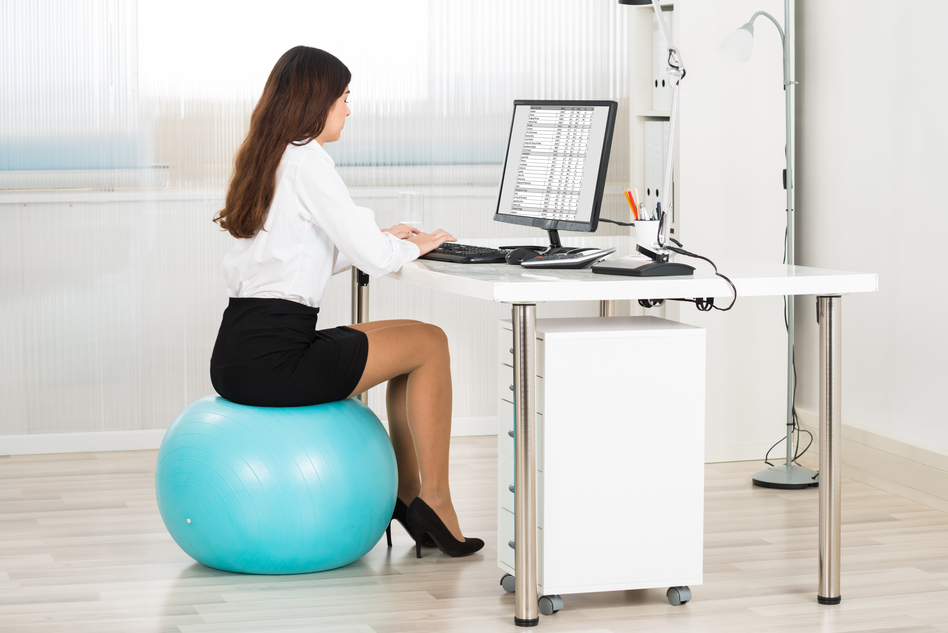ARTICLE
Using an exercise ball at work. Is it really an asset?

FOREWORD
The use of exercise balls as office chairs has grown in popularity in recent years as a way of countering the harmful effects of the static, sedentary nature of office work.
However, scientific data tends to show that the stated virtues of “active sitting” are questionable.
The purpose of using the ball is to activate the core muscles to create an exercise stimulus and a beneficial physiological response. However, it has been shown that the activation of the core muscles generated by using the ball is no greater than that generated by using a wooden bench without a backrest. Furthermore, the additional energy expenditure generated by using the ball as a chair would be negligible, i.e. approximately 4.1 kcal/hour more. Finally, prolonged use of the ball as a work chair could lead to fatigue in the lumbar muscles and affect posture.
Since the objective of ergonomics is to minimize the physical constraints related to work to increase the comfort of workers in the performance of their tasks, we have certain reservations about the prolonged use of the ball as a work chair.
From an ergonomic point of view, we believe that the use of the ball at the workstation should be limited, given that:
- The ball is not adjustable in height. As a result, it will be difficult to ensure that the upper limbs are correctly positioned in relation to the work surface.
- The back is not supported. In this context, the abdominals will be put under more strain. However, fatigue will lead to the adoption of a compensatory posture in which the trunk bends forwards, thus increasing the pressure on the discs.
- Using a ball in the workplace increases the risk of injury. Since it is unstable and bulky, the ball can cause falls.
In conclusion
Using a ball as a work chair is not very effective in countering the harmful effects of static posture associated with office work. In fact, using an ergonomic chair is a better option for reducing discomfort associated to office work.
Consult our professionals to help you select a chair that is adapted to your needs.
We also invite you to consult our checklist on office ergonomics.
References:
- Lowe BD, Swanson N, Hudock SD, Lotz G. Unstable Sitting in the Worplace-Are There Physical Activity Benefits? American Journal of Health Promotion. 2015; vol 29, No. 4: 207-209
- McGill SM, Kavcic NS, Harvey E. Sitting on a chair or an exercise ball: various perspective to guide decision making. Clin Biomech. 2006;21: 353-360
- Beer EA, Roemmich JN, Epstein LH, Howarth PJ. Increasing passive energy expenditure during clerical work. Eur J Appl Physiol. 2008;3: 353-360
